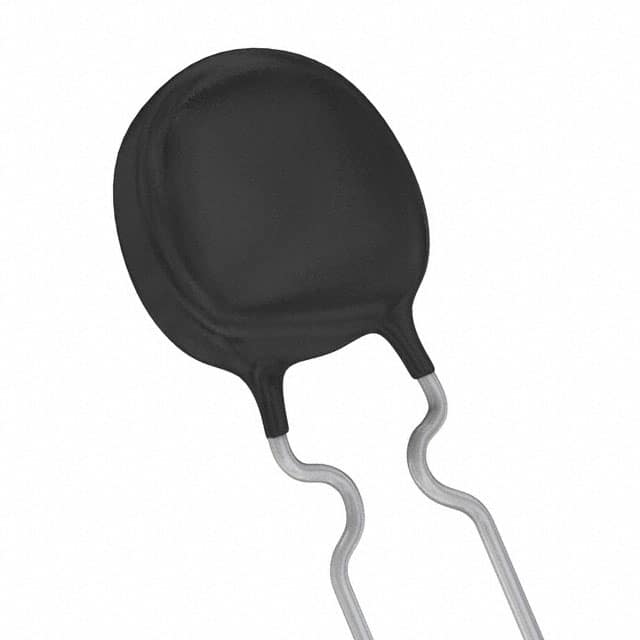Xem thông số kỹ thuật để biết chi tiết sản phẩm.

PTCCL11H211HTE Product Overview
Introduction
The PTCCL11H211HTE is a versatile electronic component that belongs to the category of PTC thermistors. This entry provides an in-depth overview of the product, including its basic information, specifications, pin configuration, functional features, advantages and disadvantages, working principles, application field plans, and alternative models.
Basic Information Overview
- Category: PTC Thermistors
- Use: Temperature sensing, overcurrent protection, and self-regulating heating applications
- Characteristics: Positive temperature coefficient, high stability, and self-regulating behavior
- Package: SMD (Surface Mount Device)
- Essence: Ceramic material with embedded conductive particles
- Packaging/Quantity: Typically supplied in reels or trays, quantity varies based on supplier and customer requirements
Specifications
- Operating Temperature Range: -40°C to 125°C
- Resistance at 25°C: 10Ω
- Maximum Voltage: 30V
- Power Rating: 1W
- Tolerance: ±5%
Detailed Pin Configuration
The PTCCL11H211HTE features a standard SMD pin configuration with two terminals for surface mounting onto circuit boards. The specific pin layout is as follows: - Pin 1: Anode - Pin 2: Cathode
Functional Features
- Temperature Sensing: Exhibits a sharp increase in resistance with rising temperature, making it suitable for temperature measurement applications.
- Overcurrent Protection: Acts as a self-regulating fuse by increasing resistance in response to excessive current flow, protecting connected components.
- Self-Regulating Heating: Utilized in heating elements where the resistance increases with temperature, providing inherent temperature control.
Advantages and Disadvantages
Advantages
- High stability over a wide temperature range
- Self-regulating behavior enhances safety in various applications
- Compact SMD package enables space-efficient designs
Disadvantages
- Limited precision compared to other temperature sensing devices
- Relatively slower response time in comparison to some alternatives
Working Principles
The PTCCL11H211HTE operates based on the positive temperature coefficient (PTC) effect exhibited by certain materials, where the resistance increases with temperature. This self-regulating behavior allows for diverse applications in temperature sensing and control, as well as overcurrent protection.
Detailed Application Field Plans
The PTCCL11H211HTE finds extensive use in various fields, including: - Automotive Electronics: Overcurrent protection in automotive circuits and temperature sensing in climate control systems. - Consumer Electronics: Thermal management in battery charging circuits and overcurrent protection in power supply units. - Industrial Automation: Temperature monitoring in industrial equipment and overcurrent protection in motor control circuits.
Detailed and Complete Alternative Models
Several alternative models to the PTCCL11H211HTE include: - PTCCL12H311HTE - PTCCL10H111HTE - PTCCL13H411HTE - PTCCL09H011HTE
These alternative models offer similar functionality with variations in operating characteristics and package sizes, catering to different design requirements.
In conclusion, the PTCCL11H211HTE PTC thermistor stands as a reliable and versatile component with diverse applications in temperature sensing, overcurrent protection, and self-regulating heating. Its unique characteristics and functional features make it a valuable asset in various electronic designs.
Word Count: 511
Liệt kê 10 câu hỏi và câu trả lời thường gặp liên quan đến ứng dụng PTCCL11H211HTE trong giải pháp kỹ thuật
Sure, here are 10 common questions and answers related to the application of PTCCL11H211HTE in technical solutions:
What is PTCCL11H211HTE?
- PTCCL11H211HTE is a high-temperature thermistor with positive temperature coefficient characteristics, commonly used for temperature sensing and control in technical applications.
What is the operating temperature range of PTCCL11H211HTE?
- The operating temperature range of PTCCL11H211HTE is typically between -40°C to 250°C, making it suitable for high-temperature environments.
How is PTCCL11H211HTE typically used in technical solutions?
- PTCCL11H211HTE is often used for temperature compensation, overcurrent protection, and temperature measurement in various technical applications such as automotive, industrial equipment, and consumer electronics.
What are the key advantages of using PTCCL11H211HTE in technical solutions?
- Some key advantages include its high-temperature stability, reliability, and self-regulating properties, which make it ideal for applications requiring precise temperature control.
Can PTCCL11H211HTE be used in harsh environments?
- Yes, PTCCL11H211HTE is designed to withstand harsh environmental conditions, including high temperatures, making it suitable for demanding technical applications.
What are the typical resistance and tolerance values of PTCCL11H211HTE?
- The typical resistance values range from several ohms to several kilohms, with tolerances typically ranging from ±5% to ±20%.
How does PTCCL11H211HTE compare to other temperature sensors?
- PTCCL11H211HTE offers advantages such as faster response times, higher accuracy, and better stability compared to some other temperature sensing technologies.
Are there any specific considerations for integrating PTCCL11H211HTE into technical designs?
- Designers should consider factors such as thermal management, electrical insulation, and proper mounting to ensure optimal performance and reliability.
Can PTCCL11H211HTE be used for temperature compensation in electronic circuits?
- Yes, PTCCL11H211HTE can be effectively used for temperature compensation in electronic circuits to maintain stable operation across varying temperatures.
Where can I find detailed specifications and application guidelines for PTCCL11H211HTE?
- Detailed specifications and application guidelines for PTCCL11H211HTE can be found in the product datasheet provided by the manufacturer or supplier.

